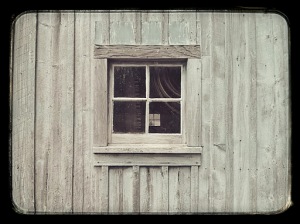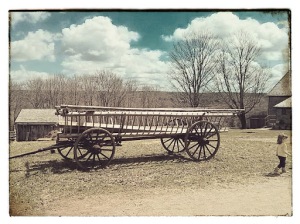For as long as I can remember, I’ve dreamt of impossible houses—simple, stark exteriors that belie the infinite labyrinthine structures contained within. A closet that is really a chambered corridor spiraling ever inward, nautilus-like, before expanding out into a bedchamber the size of a cathedral. An endless hallway of identical doors leading to identical dens, save for slight variations in the arrangement of furniture. A swimming pool wending its way through the dark stacks of a subterranean library.
Often, there are landmarks of recognition—a character, a dwelling, a room, an object from my past. Sometimes it is entirely unexplored territory. Either way, I spend my nights mapping an interior landscape that reveals and reveals and reveals.
I don’t know why I have these dreams. But I do know that they mess with my equilibrium well after I awaken, that altered perspective staying with me for hours—or days—after.
Some months ago, the four of us made our way around the grounds of an old Nova Scotia farm and a familiar feeling came over me, a kind of recognition. It was, I realized, the first time I had felt truly compelled by the architecture of this new country, and so I started taking pictures: hand-hewn crossbeams, the sturdy hinges of a barn door, stairs disappearing into shadow. It seemed there was a revelation in every angle.
As we moved into and out of buildings, my daughter repeatedly patted my hip, a touchstone of sorts, before running a few paces forward and then back again. Koun and Boy walked far ahead on some other mission.
“Mama, where’s the piggy?” The pigs, we’d been told, were to be found in a hay-filled corner of the barn before us.
As we entered into darkness, Girl took my hand and then leapt up into my arms when we found what we’d been searching for—a great sow at rest, a row of content piglets suckling alongside her.
A woman—probably there with her grandchild—stepped back and offered her spot at the railing.
“Do you want to get closer?” Girl clutched my arms tightly but nodded.
The woman next to us smiled as she turned to leave. “What a sweetheart. You’re lucky, you know. Girls are so much easier than boys.”
Girl and I and the pigs rested for a moment in the shadows.
“Mama?”
“Yes?”
“The piggies want to go outside.”
Stepping back out into sunlight, Girl squirmed free of my arms, and I took one last photo: the skeletal ribs of a hay wagon and the spare houses beyond it—that had been my aim. But the sun’s glare refracted against the screen in such a way that I framed the subject blindly. And so when I reviewed the image later, I saw that I had missed my mark but caught what I could not then see: my daughter, just on the verge of stepping out of the photograph, exuding a carefree simplicity as she strutted along her path.
I thought, a girl is a house
an idea
a doorway
a mystery
a universe
unfolding.





I love this Tracy. You have captured the essence of things that I feel when I am drawn to these types of places, including abandoned places (I don’t dream of them though!). However, I think sometimes my feelings are drawn from fear, and overcoming it, and other times it’s almost a feeling of homecoming. I love the transience of time in these places, the spirit of wabi sabi, and trying to capture the fleeting moments. Your last picture of illustrates it very well, with the faded glory of the wagon and buildings, having weathered the ravages of time, looking at fewer days ahead than behind them, yet there is girl, in all her youth and innocence and curiosity about the world, completely present, but looking for interesting minute futures all around her, while surrounded by the relics of the past.
Thank you for your lovely comment, Ms. Meilleur. Yes, that last photo—that accidental snapshot—really got me, too. Beauty, loss, love, what moves us—it’s all about impermanence, isn’t it.